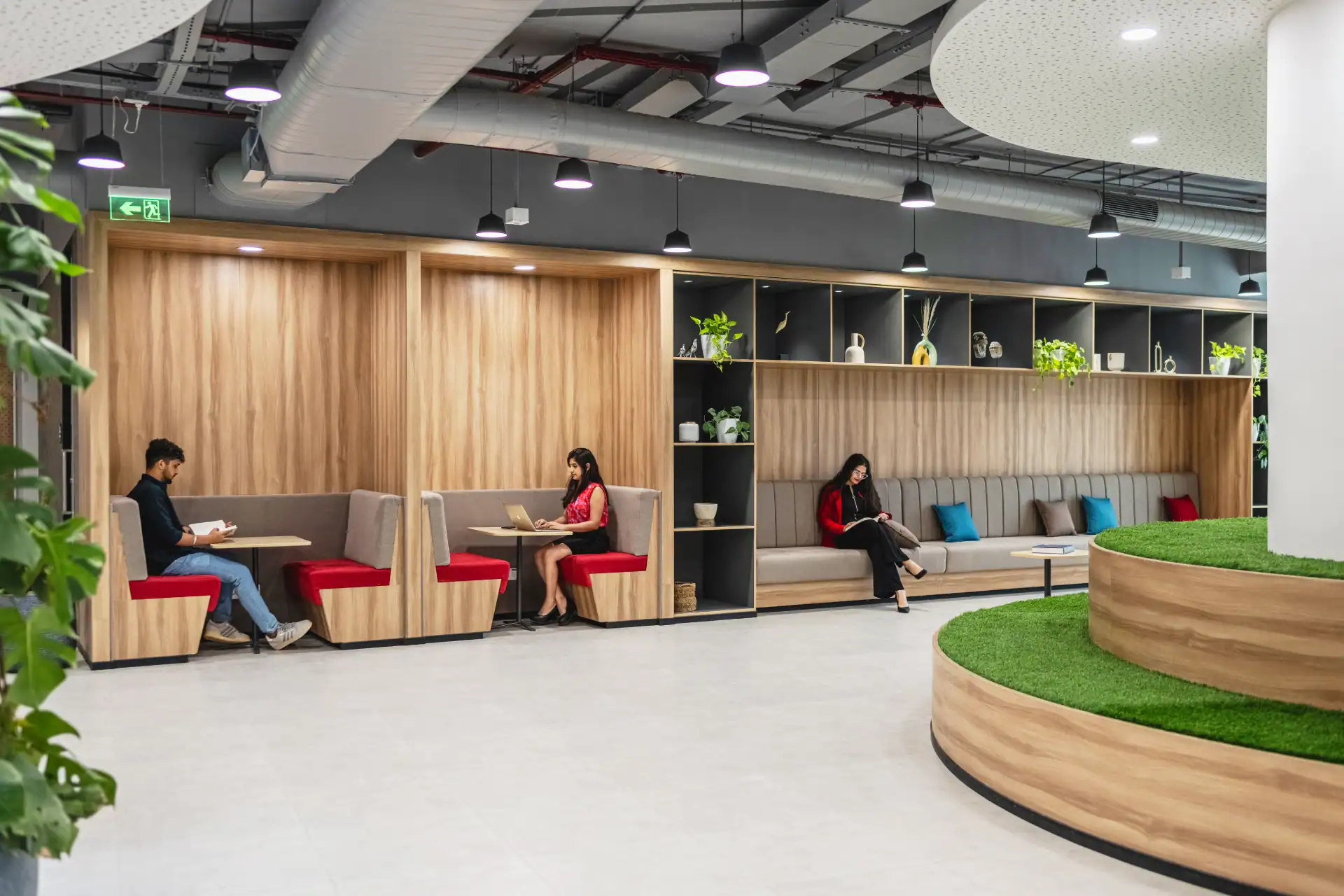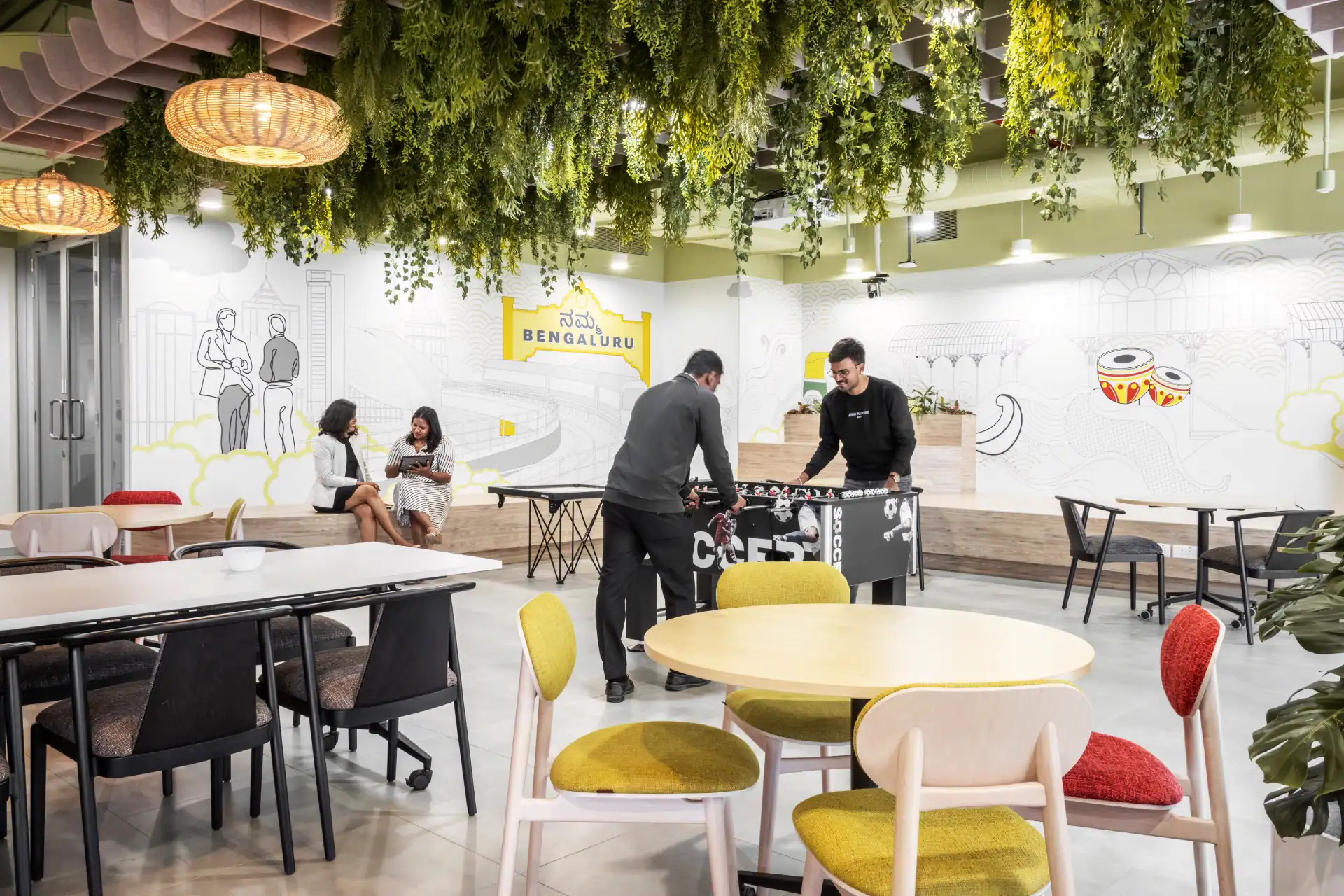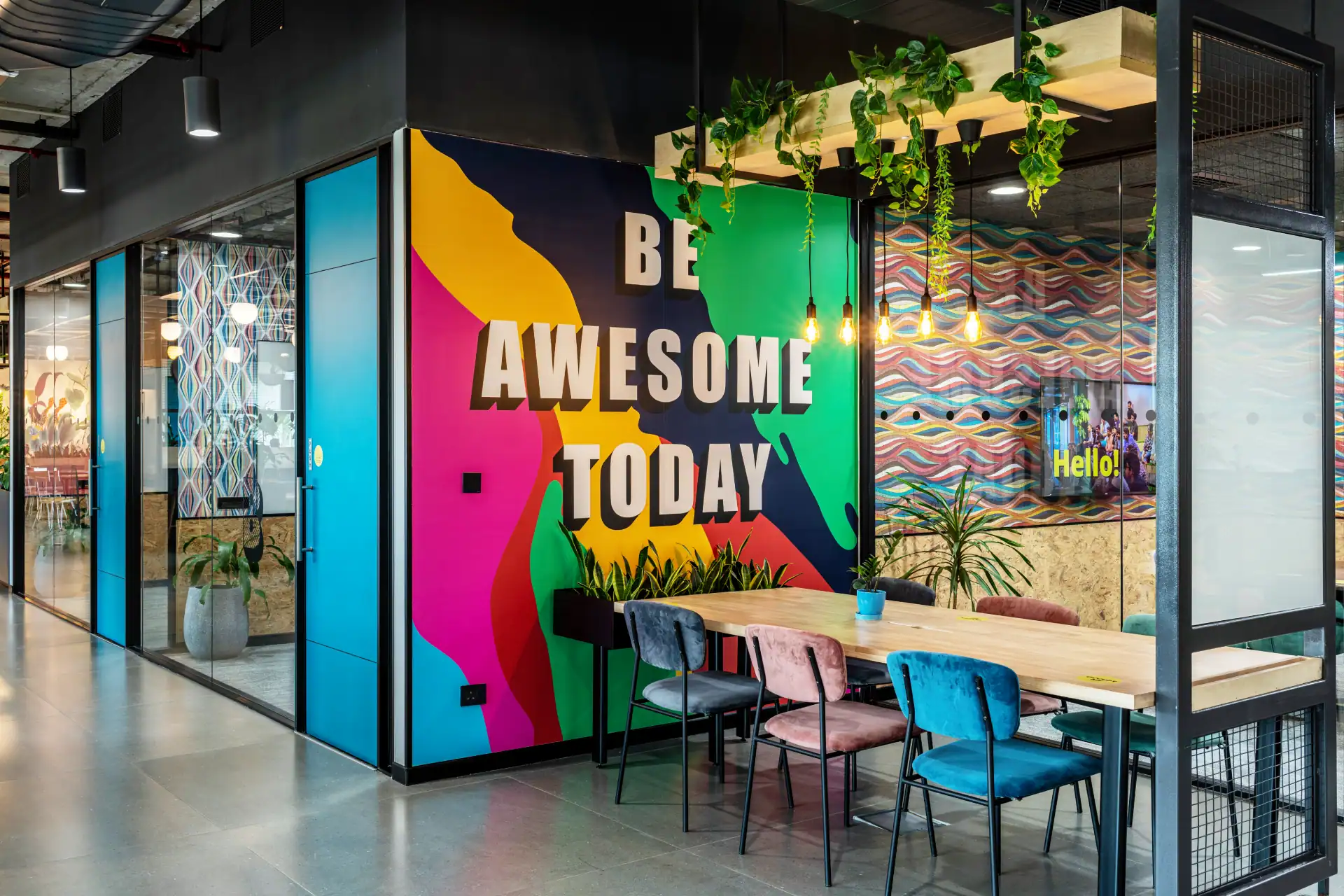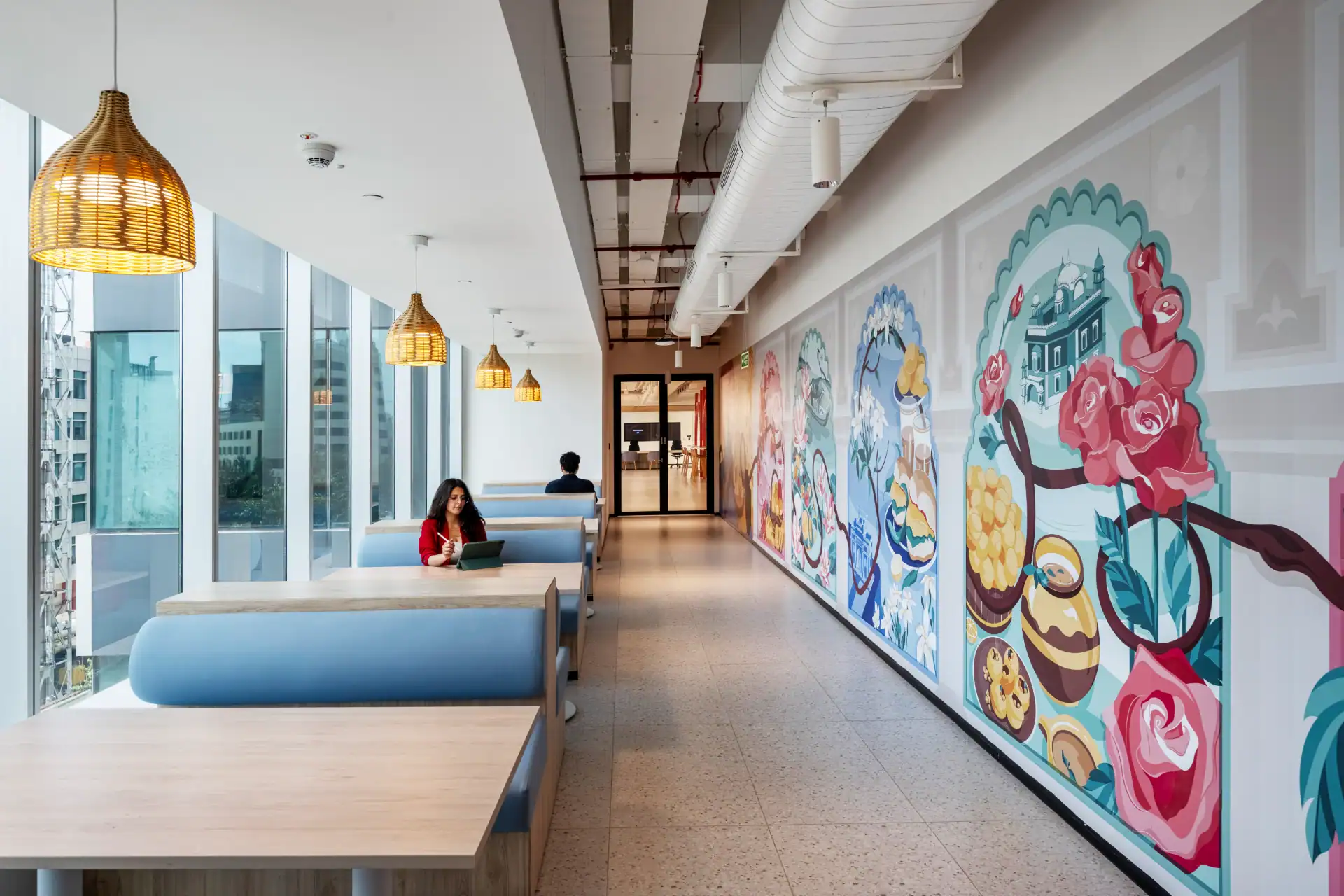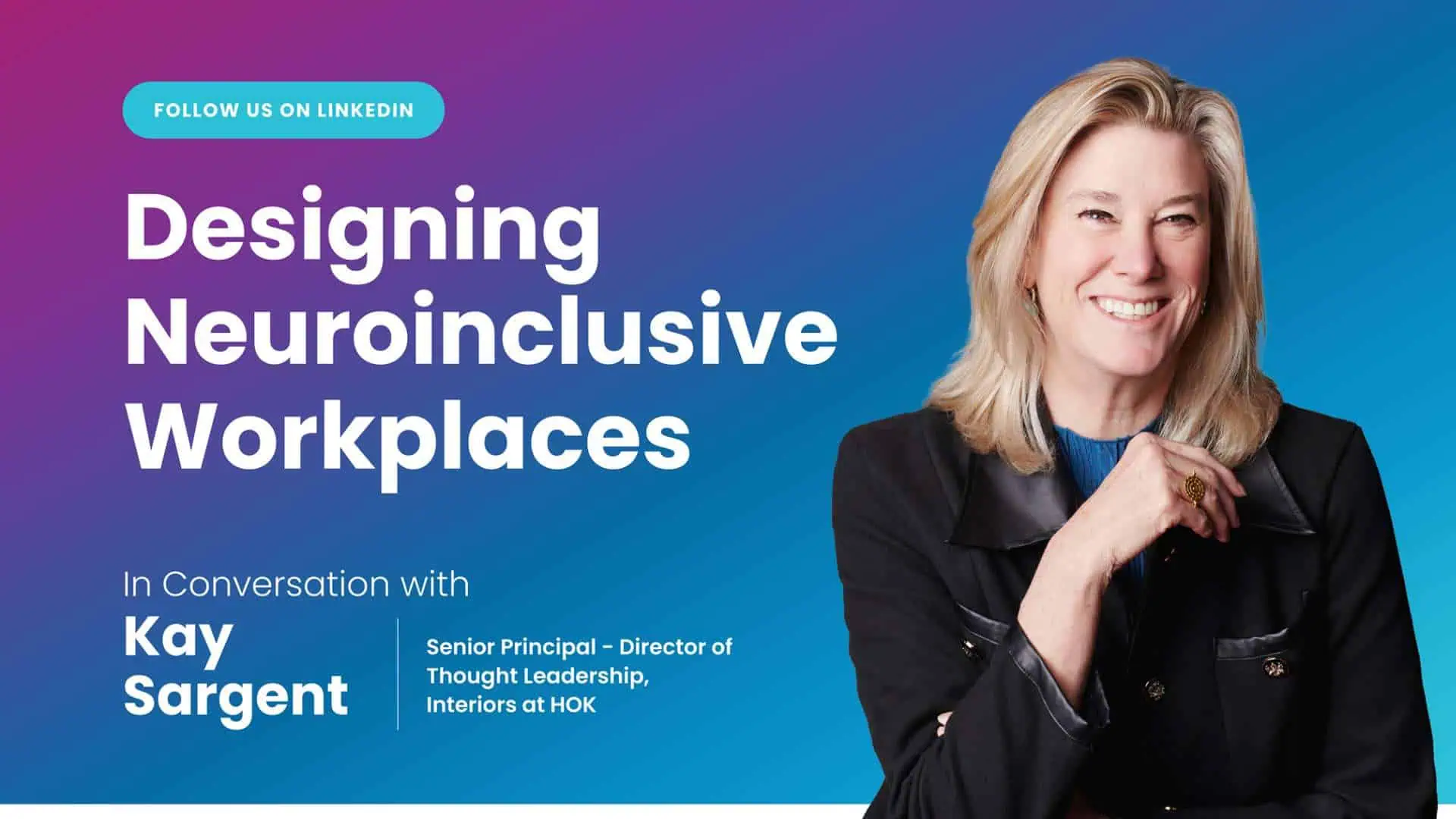Reimagining the office as a micro-city, a dynamic, integrated ecosystem rather than a mere productivity machine, is rapidly gaining traction in workplace interior design and commercial real estate strategy. As organizations worldwide recalibrate their work environments to better serve increasingly hybrid, diverse, and experience-driven workforces, this urban-inspired approach offers practical and inspiring pathways to enhance employee well-being, engagement, and collaboration.
Our recent poll reveals compelling preferences that underscore this paradigm shift. The data signals an overwhelming desire for workplaces that nurture mental restoration, foster community, and celebrate culture. These are exactly the qualities found in a thoughtfully designed micro-city. This evidence-based approach guides how commercial real estate stakeholders and workplace designers can reimagine office ecosystems that resonate deeply with occupants.
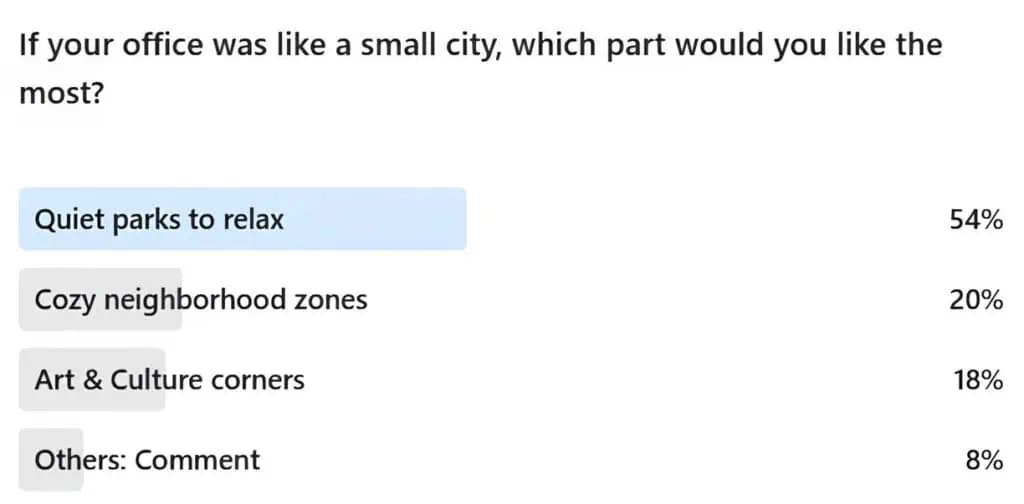
How to Build Your Urban-Ecosystem Inspired Workplace
Building a micro-city is a strategic endeavor that goes beyond aesthetics. It requires a foundational philosophy centered on human behavior and organizational goals. Before a single brick is laid, a modern workplace must be designed with these four pillars in mind:
- Map Movement: A workplace should be designed to create both intentional and spontaneous paths.
- Design for Diversity: A truly effective workplace is inclusive, accommodating a spectrum of working styles, neuro-diversities, and individual needs.
- Echo Local Identity: Just as a city’s character is shaped by its local culture and geography, a workplace should reflect the unique identity of its organization and surrounding community.
- Prioritize Well-being: The post-pandemic workforce has made it clear that well-being is not a perk, but a necessity. A micro-city-inspired workplace places physical and mental health at its core.
Benefits of Adopting the Micro-City Model in Workplace Design
Treating the office as a micro-city creates a living environment where diverse spatial experiences support human rhythms and business outcomes simultaneously.
This approach:
- Elevates employee well-being and mental health through nature and quiet zones, reducing burnout and enhancing focus.
- Strengthens cross-functional collaboration and spontaneity via social hubs and community gathering points, breaking down silos.
- Enriches organizational culture and identity by integrating cultural and artistic expressions, increasing engagement and retention.
- Provides flexible, multi-use spaces adaptable to evolving business needs, future-proofing real estate investments.
For businesses navigating rapid change, this holistic strategy aligns physical spaces with human needs and corporate goals, transforming offices into magnets for talent and hubs for innovation.
05 Micro-City Principles to Integrate into Workplace Design
Here are five essential principles to guide the creation of your urban-inspired workplace ecosystem.
01 The Quiet Park: Nature-Infused Retreats
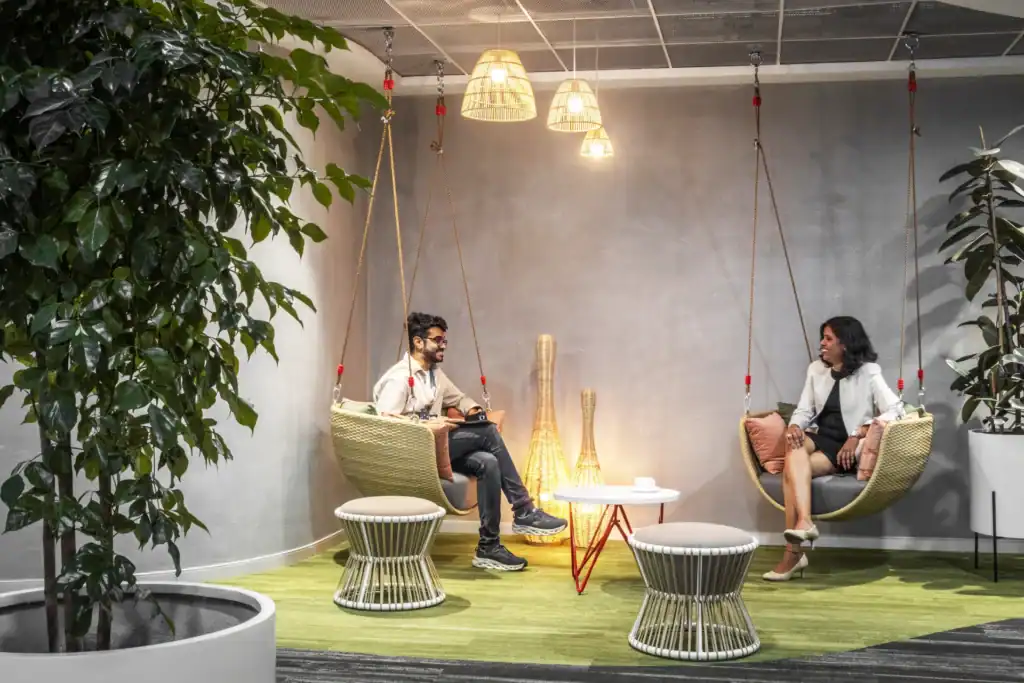
Image Courtesy: Mitsubishi UFJ Financial Group, Bengaluru
This archetype is the resounding priority for today’s workforce. The Quiet Park is a dedicated sanctuary designed for mental decompression and restorative focus. It is the antithesis of the bustling open office, providing a much-needed space for individuals to recharge and recalibrate.
The Quiet Park directly addresses the need for tranquility and mental well-being, which the poll identifies as the single most desired element. It acknowledges that effective work requires moments of quiet contemplation and separation from constant digital stimulation.
- Ideal Setup: This is a crucial element for any business, regardless of industry, that operates in a high-stress, fast-paced environment. It is an essential investment for companies committed to combating employee burnout and fostering sustained focus.
- Actionable Insight: Design a ‘park’ zone with a dynamic soundscape system that projects calming natural sounds (e.g., gentle rain, rustling leaves) at a low volume. Pair this with a subtle, biophilic scent diffusion system and a variety of seating options, from ergonomic loungers to secluded acoustic pods. The goal is to engage multiple senses to create a truly immersive and restorative retreat.
02 The Neighborhood Hub: Social Micro-Communities
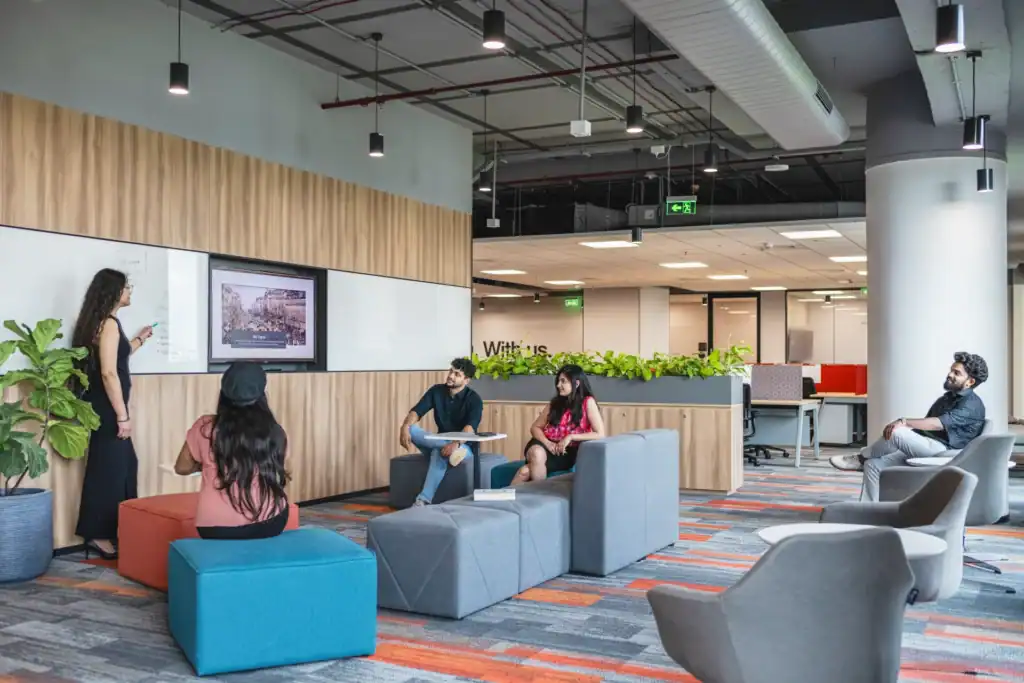
Image Courtesy: International Automotive Brand, Bengaluru
With 20% of the vote, “Cozy neighborhood zones” are a clear expression of the desire for community and connection. The Neighborhood Hub is a localized, social space that acts as a central gathering point, fostering a sense of camaraderie and spontaneous interaction among colleagues.
This archetype is about decentralizing social hubs. Instead of one large, central cafeteria, it proposes creating smaller, more intimate zones within different business units. This encourages informal, “third place” interactions without the pressure of a formal social event.
- Ideal Setup: This is perfect for large organizations or businesses with a hybrid workforce where fostering a sense of belonging is a challenge. It gives teams a reason to come in, offering a comfortable and familiar space to reconnect with their colleagues.
- Actionable Insight: Create a “maker-station” within each neighborhood hub. This could be a sophisticated coffee bar with professional-grade machines and custom blends, a smoothie station, or a small, self-serve library of books and magazines. This gives employees a shared ritual and a reason to gather, fostering conversation and community around a tangible, non-work-related activity.
03 The Gallery: Art & Culture Corners
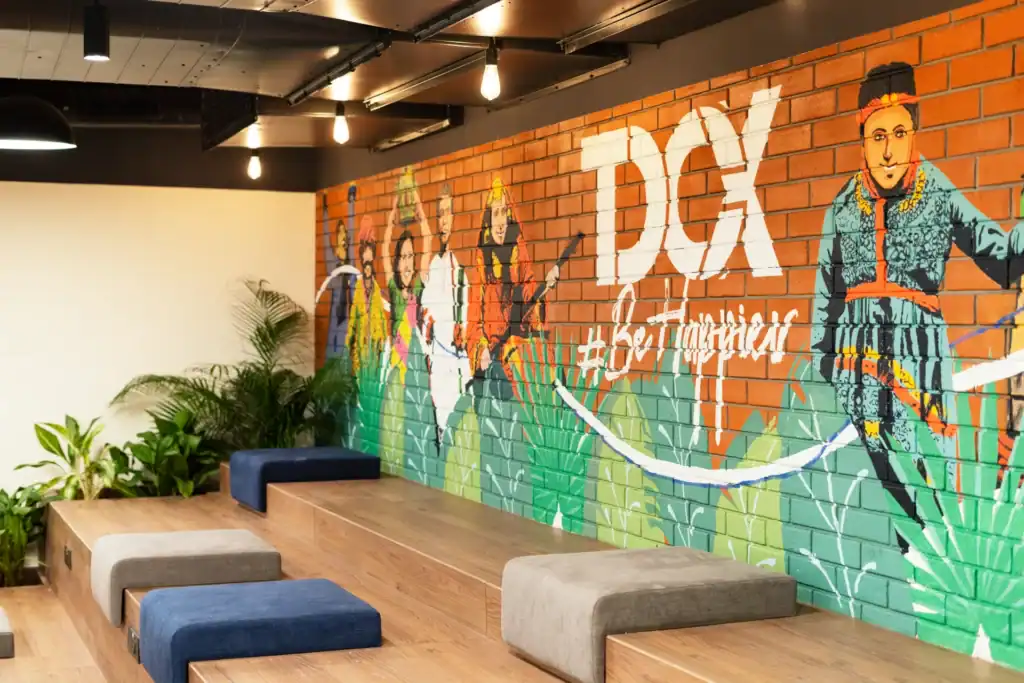
Image Courtesy: TDCX, Hyderabad
Tying with Neighborhood Hubs, “Art & Culture corners” demonstrate that employees are also seeking inspiration and a connection to a greater sense of purpose. This archetype moves the workplace beyond mere functionality, transforming it into a space for creative expression, identity, and shared culture.
The Gallery is a space that curates and celebrates the unique culture of an organization. It is a living exhibition that reflects the company’s values, supports creative expression, and provides visual inspiration that can spark new ideas.
- Ideal Setup: Best fororganizations that place a high value on employee engagement and corporate social responsibility. It signals to employees that the company values creativity, identity, and a vibrant, inclusive culture.
- Actionable Insight: Implement a “living art” installation where a large, digital canvas can be updated daily with generative AI art based on real-time data from the company. This turns a static corner into a dynamic, ever-changing reflection of the company’s pulse, making culture a visible and interactive part of the workday.
04 The Plaza: The Urban Heartbeat
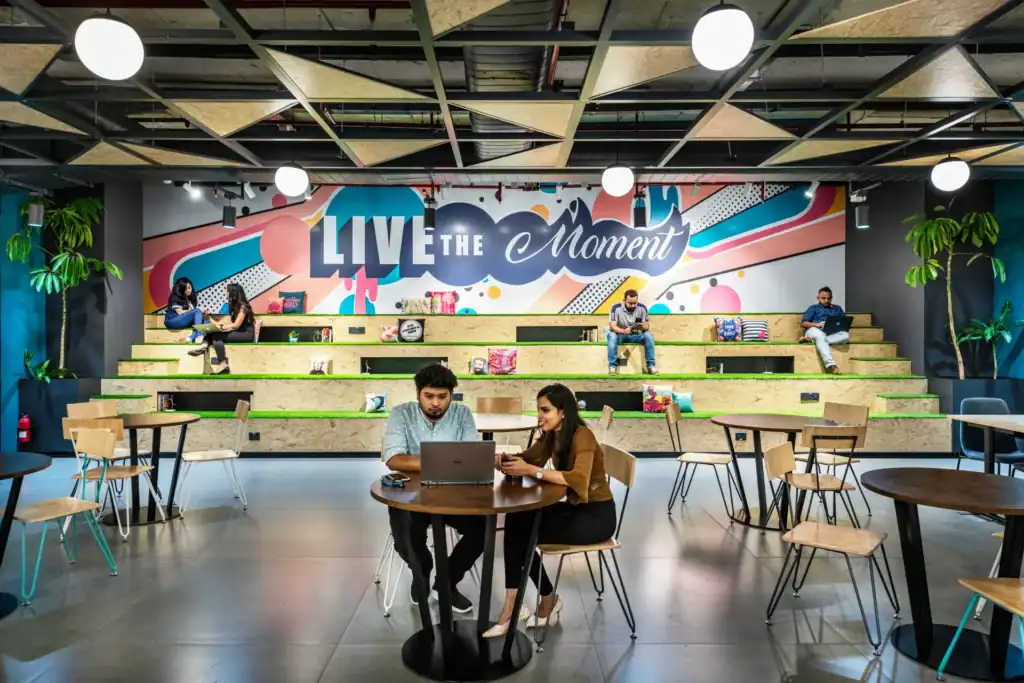
The Plaza is the dynamic, multi-purpose hub that serves as the social and cultural heart of the workplace. It is not a fixed-use meeting room, but a central, flexible space designed to host everything from town halls and large-scale presentations to celebratory events and casual gatherings.
It’s where the collective energy of the organization is felt most vibrantly, fostering a sense of shared purpose and belonging.
- Ideal Setup: This archetype is ideal for large enterprises and culturally dynamic organizations that need a central, high-energy space to unify their teams and celebrate milestones. It is for a business that sees its culture as a living, breathing entity.
- Actionable Insight: Implement an integrated “plug-and-play” technology infrastructure with multiple micro-AV pods. Instead of a single, large screen at one end, install a network of synchronized digital displays and audio zones. This allows a single, seamless presentation to be viewed by a large audience, while also enabling the space to be instantly subdivided for multiple small-group collaborations using the same underlying tech.
05 The Social Lounge: Active Play & Recharge Zones
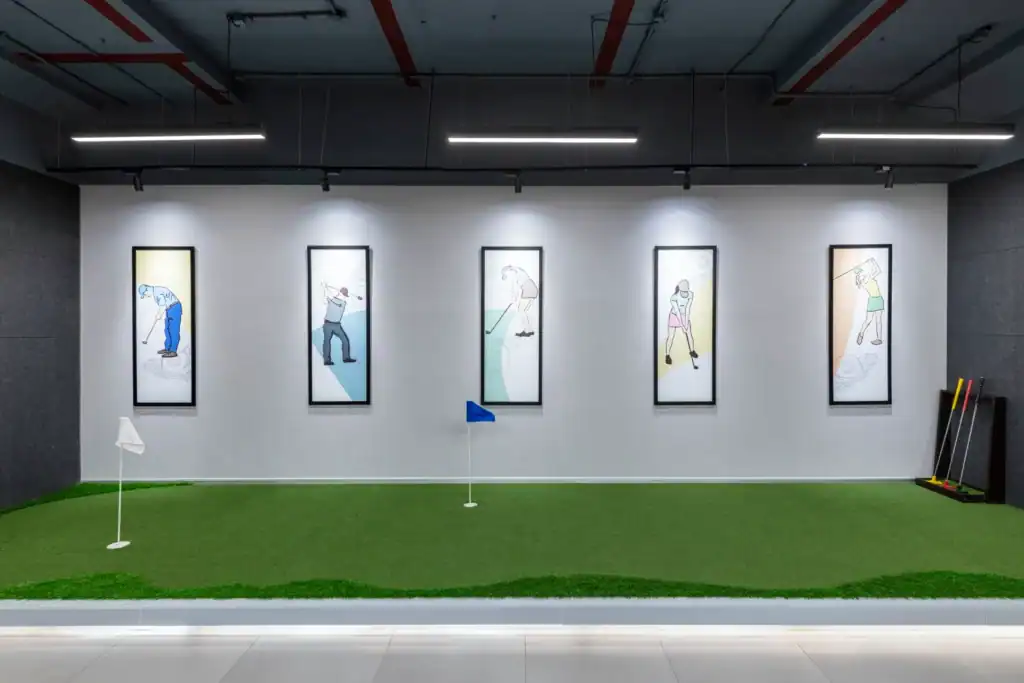
Image Courtesy: Callaway, Hyderabad
This archetype is the evolution of the traditional breakroom, moving beyond passive relaxation to a dynamic space for active decompression and genuine social connection. It acknowledges that moments of play and lighthearted interaction are vital for stress reduction, cognitive recalibration, and building a strong, cohesive team culture.
This is a designated zone for active leisure and unstructured social engagement. It is designed to blur the lines between work and life, fostering a culture where play is not seen as a distraction, but as an essential tool for creativity and team-building.
- Ideal Setup: This is an invaluable asset organizations seeking to build a strong, modern culture that values authentic connection and mental agility.
Actionable Insight: Create a dedicated “Urban Athletic Hub” within the office footprint. This space should integrate a high-end recreational facility, such as a state-of-the-art golf simulation zone or a multi-purpose mini-court for games like basketball or pickleball. The design should be intentional, using professional-grade materials and integrated technology for an authentic, high-quality experience.
To Sum Up
In an era where the workplace must compete with the comfort and flexibility of home, the micro-city model offers a powerful strategic advantage. By moving beyond conventional floor plans and embracing these five principles, organizations can design an ecosystem that is not only highly functional but also deeply human. This holistic approach creates vibrant environments that nurture well-being, foster authentic connections, and serve as powerful hubs for culture and innovation.
The office, reimagined as a dynamic urban landscape, becomes a clear reflection of a company’s commitment to its most valuable asset: its people.
Design and build your urban-inspired workplace! Connect with Zyeta’s design experts today to transform your vision into a strategic, human-centered office ecosystem.
Related Reads:
05 Key Lessons Your Workplace Can Take From The Retail Industry
05 Impactful Aspects of LEED v5 that Businesses Need to Know Now

